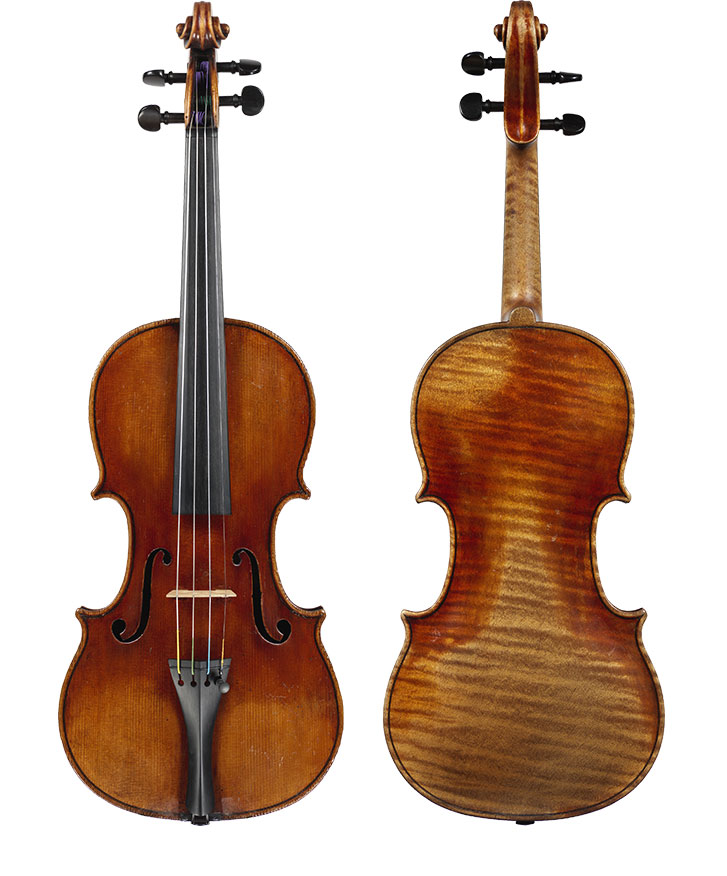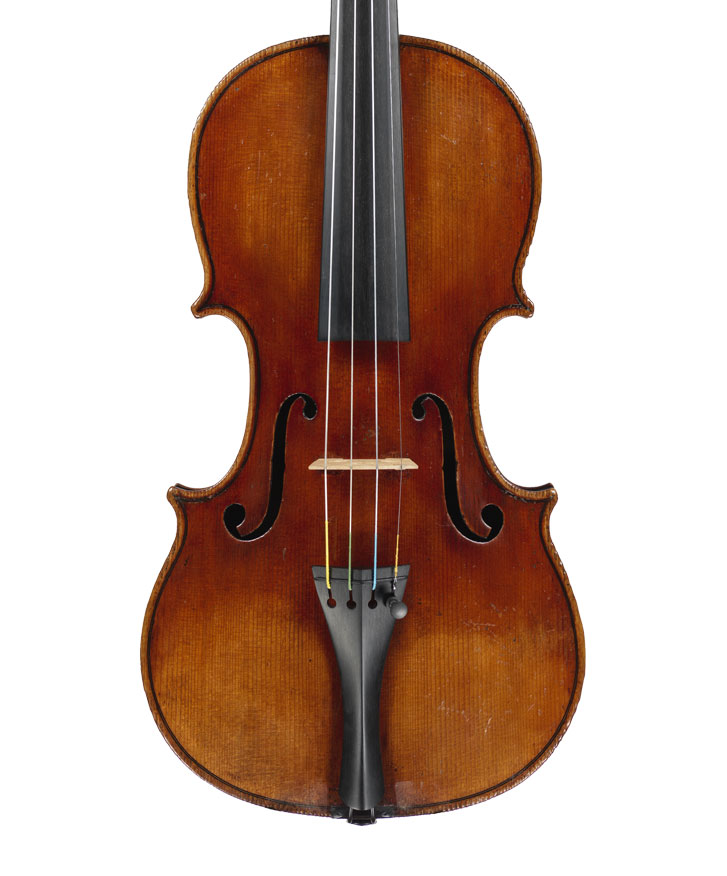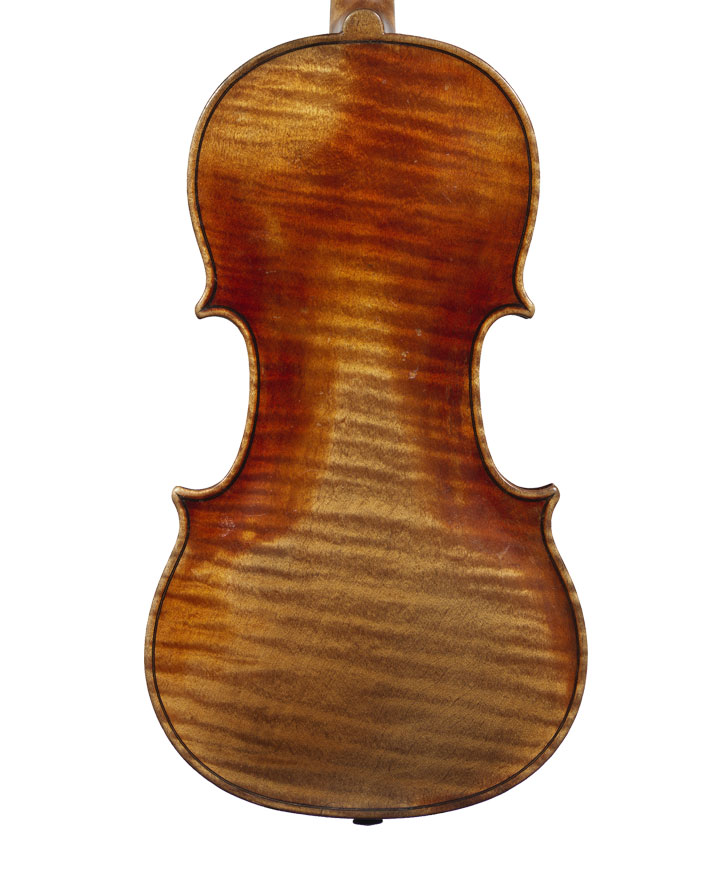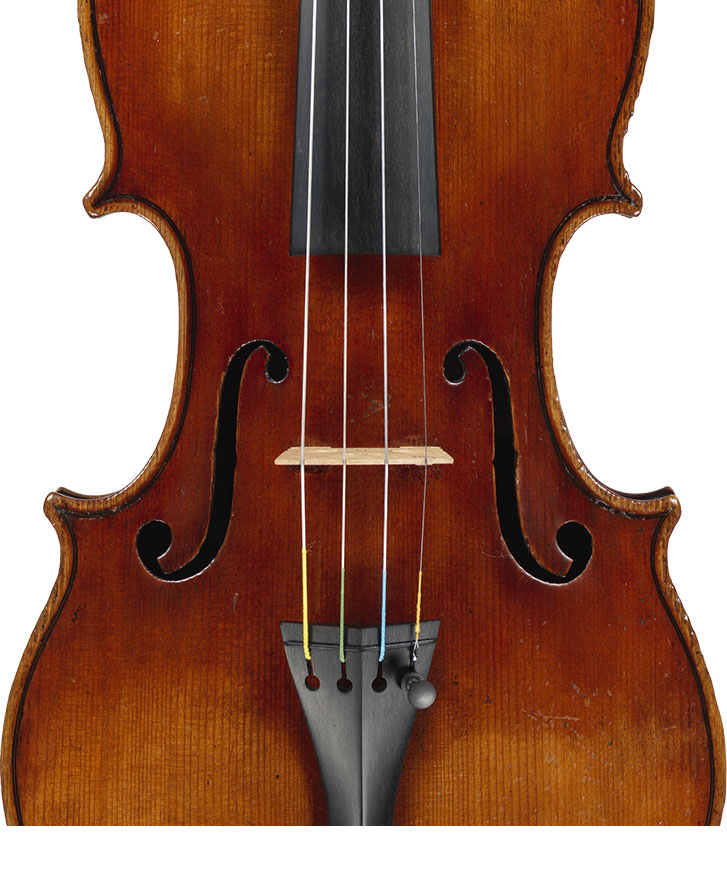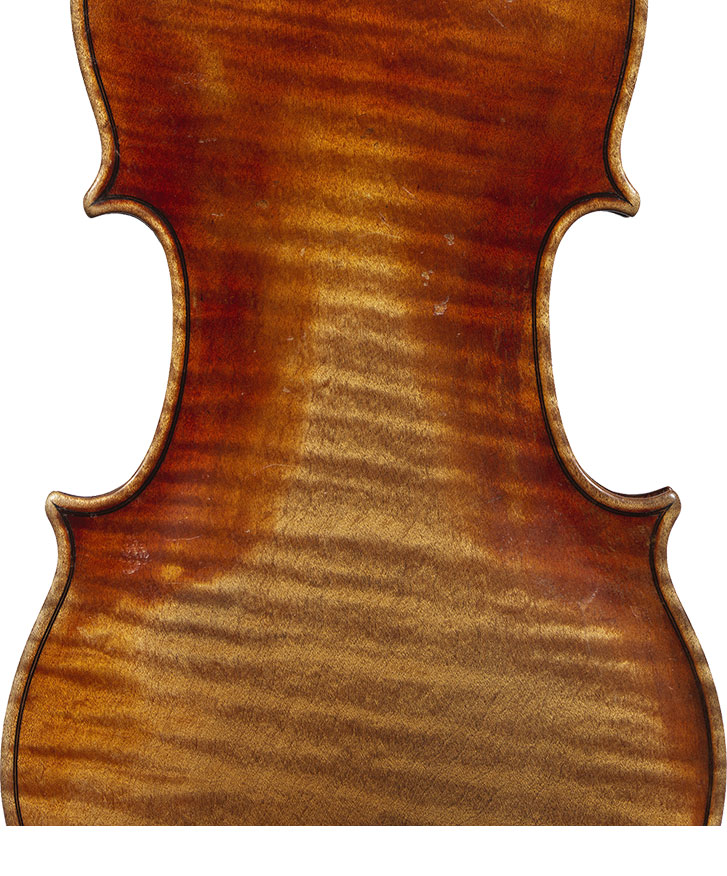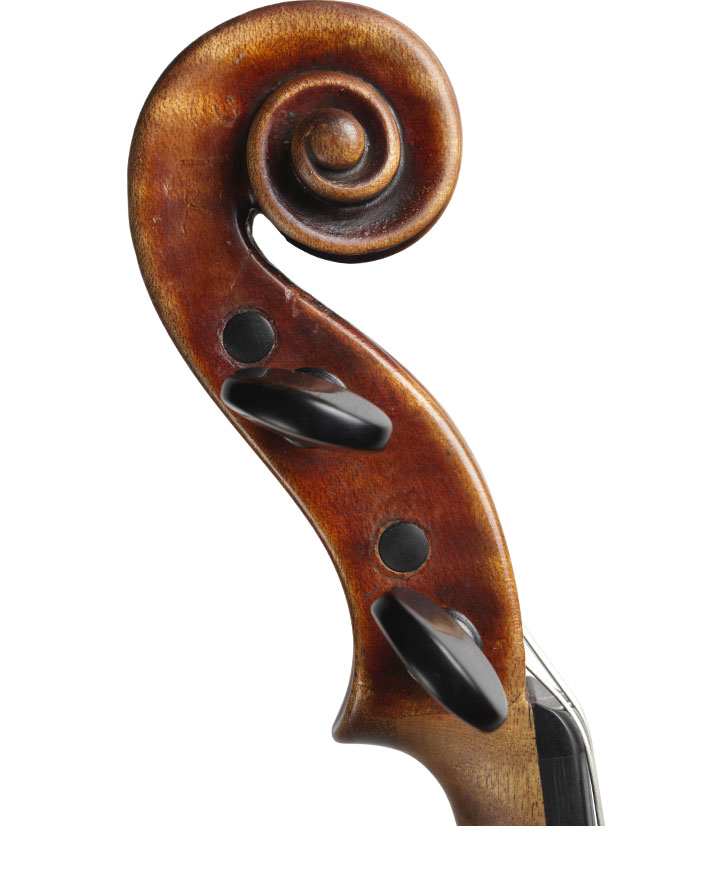Violin by
Leandro Bisiach
Milan, 1919
“Montagnana copy”
As head of the most important violin shop in Italy at the turn of the 20th century, Leandro Bisiach (b. 1864 – d. 1945) led the renaissance of violin making in Northern Italy. In due course, he employed many of the most important makers in Lombardy, and his instruments showcased a creative personal style that drew inspiration from classical makers across Italy.
This violin is patterned after the work of Domenico Montagnana, a master maker from 18th-century Venice. Montagnana’s violin model was distinctive, and in using it, Bisiach would have been making a creative departure from the usual practice of copying violins by the Stradivari, Guarneri, and Amati families. Bisiach frequently used models by other non-Cremonese makers like G. B. Guadagnini and Pietro Giovanni Mantegazza.
This instrument offers a dark, rich tone with plenty of power and articulation in an instrument equally interesting to musicians and collectors.
Violin by
Leandro Bisiach
Milan, 1919
“Montagnana copy”
As head of the most important violin shop in Italy at the turn of the 20th century, Leandro Bisiach (b. 1864 – d. 1945) led the renaissance of violin making in Northern Italy. In due course, he employed many of the most important makers in Lombardy, and his instruments showcased a creative personal style that drew inspiration from classical makers across Italy.
This violin is patterned after the work of Domenico Montagnana, a master maker from 18th-century Venice. Montagnana’s violin model was distinctive, and in using it, Bisiach would have been making a creative departure from the usual practice of copying violins by the Stradivari, Guarneri, and Amati families. Bisiach frequently used models by other non-Cremonese makers like G. B. Guadagnini and Pietro Giovanni Mantegazza.
This instrument offers a dark, rich tone with plenty of power and articulation in an instrument equally interesting to musicians and collectors.

